$DEFI Trending, Business Insider Featuring $DEFI, Q4 2025 and Q1 2026 Developments and MORE! – October Development Update
October was a month of strong growth and ...

Here at De.Fi we’re always keeping an eye out for potential airdrop opportunities. Our YouTube channel is one of the best resources you can use to learn about new and exciting airdrop/retrodrop opportunities that are open to crypto enthusiasts.
One of our recent videos is on the potential Zora Network airdrop and what users can do to position themselves to be rewarded. The video has quickly gained momentum, making it clear that there is plenty of community excitement around a potential retrodrop for activity on the network.
In this blog, we’ll dive a bit deeper into Zora’s background while also reviewing the steps we cover in the Zora airdrop YouTube video. You’ll get all the information and links you need to participate yourself!
The Zora airdrop is an interesting situation because Zora offers both an NFT marketplace + publishing platform and an Ethereum layer 2 network. Founded in 2020, the Zora NFT app is a “decentralized protocol where anyone can permissionlessly buy, sell, and create.”
Zora has created one of the most seamless apps for anyone to upload, mint, and share NFTs. Many enthusiasts now compare them to WordPress or Shopify, companies that make a once hard-to-do task (hosting blogs or ecommerce stores, respectively) easy for the average user.
With the success of their flagship NFT services, Zora then decided to expand to cover the entire NFT production lifecycle with the launch of Zora Network. Zora Network is a “fast, cost-efficient, and scalable Layer 2 built to help bring media onchain…Zora Network is an ecosystem that puts NFTs first.”
Zora Network solves the issue of significant gas fees on Ethereum mainnet which is a point point for much of the NFT community. On the Zora L2, transactions are confirmed in seconds with fees that are usually a small fraction of what you would expect to pay on ETH L1. For instance, minting an NFT usually costs less than $.50 on Zora Network.
NFTs on Zora can be minted or collected on 4 different mainnet networks:
There’s a huge amount of positive energy around the project amongst both NFT creators and collectors, with much of the community applauding Zora’s open design and forward-thinking approach to building a sustainable NFT marketplace. They are also innovating with unique revenue-sharing designs:
Introducing Protocol Rewards:
— Zora (@ourZORA) August 3, 2023
Creators and developers can now earn onchain rewards on Zora.
Protocol Rewards are made possible by our Mint Fee, which is now automatically split across creators and developers. pic.twitter.com/CayrUGdWSm
With an active community, thriving marketplace, and integrations throughout the trending Optimism Superchain stack, Zora is the perfect choice if you’re an airdrop hunter looking for an established dapp to experiment with.
Before we move to airdrop tasks, be sure to take note of the official links below for Zora’s online properties. Remember to always be vigilant when completing the airdrop requirements and to only use URLs for the official projects we have listed.
Scammers will often use links that look very similar to an official project’s domain as a way of tricking crypto users into connecting their wallets to malicious smart contracts. Stay safe and always check links twice.
The first step you’ll want to take in qualifying for a potential Zora airdrop is to add the chain to your web3 wallet. There’s an easy step-by-step guide to doing this via MetaMask on the Zora site. If you don’t have MetaMask, you will need to look at the instructions for your DeFi wallet around adding custom networks.
Once you have found the instructions to add a custom network, you will want to enter the following information:
Network Name: Zora
RPC URL: https://rpc.zora.energy
Chain ID: 7777777
Currency symbol: ETH
Block explorer URL: https://explorer.zora.energy
Here’s what this info looks like when entered into MetaMask:
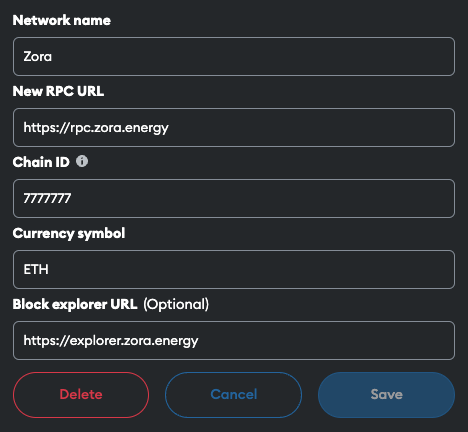
After adding Zora to your wallet, the next step will be to add funds to your wallet. If you prefer to use the official Zora bridge, you can do so here: https://bridge.zora.energy/
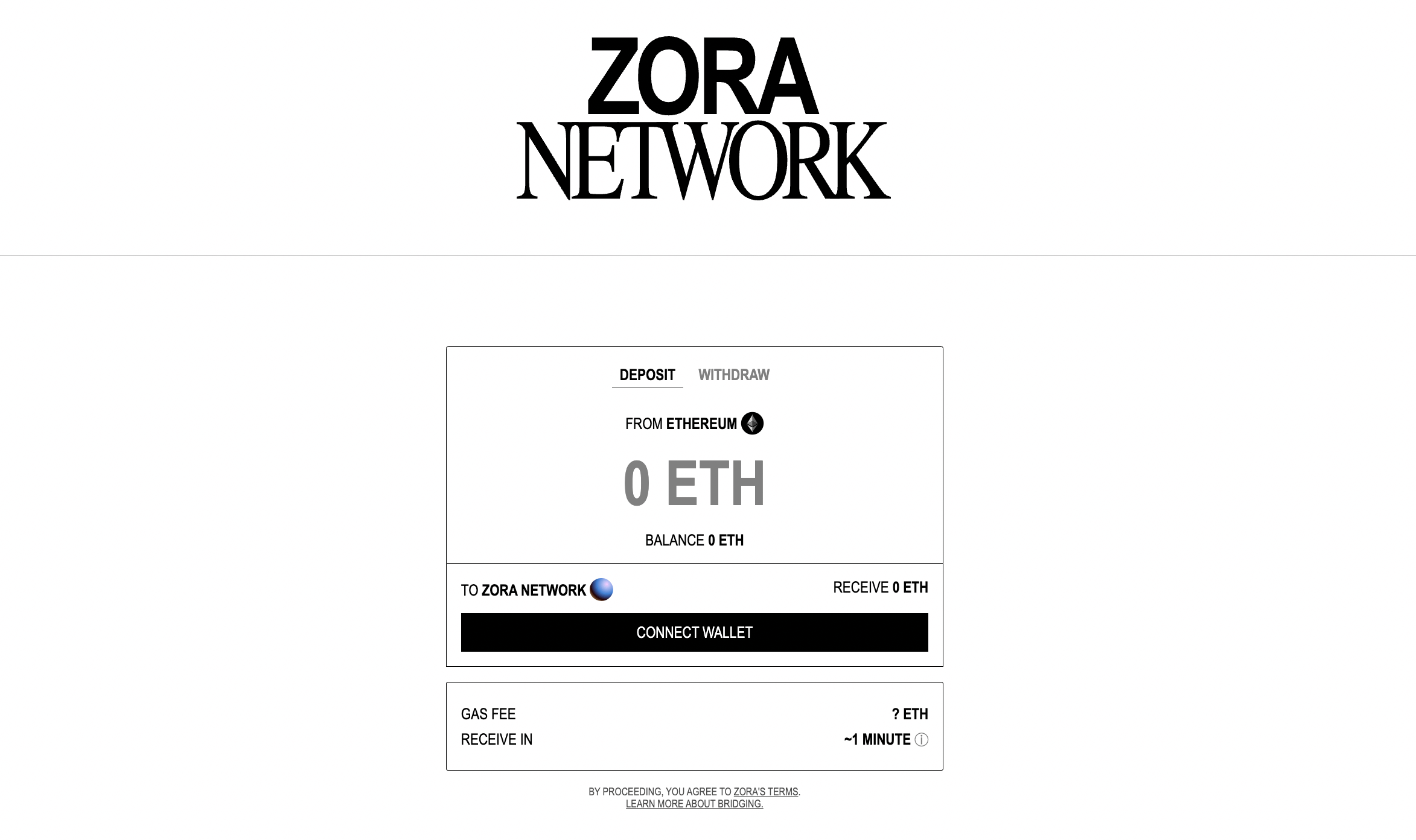
Please note, the official Zora bridge only allows you to send funds from the Ethereum mainnet. This will likely incur substantial gas fees, so double-check to ensure that you have enough funds.
If you would like to bridge to Zora without Ethereum mainnet fees, there’s another bridge solution. Even better, this solution may qualify you for a different airdrop! The Orbiter bridge allows you to bridge native ETH from any number of chains to the Zora Network. This includes low-fee options like Arbitrum, Optimism, and Base. The bridge can be accessed here: https://www.orbiter.finance/
Here’s what the interface looks like for a low-fee transfer of .01 ETH from Base to Zora Network:
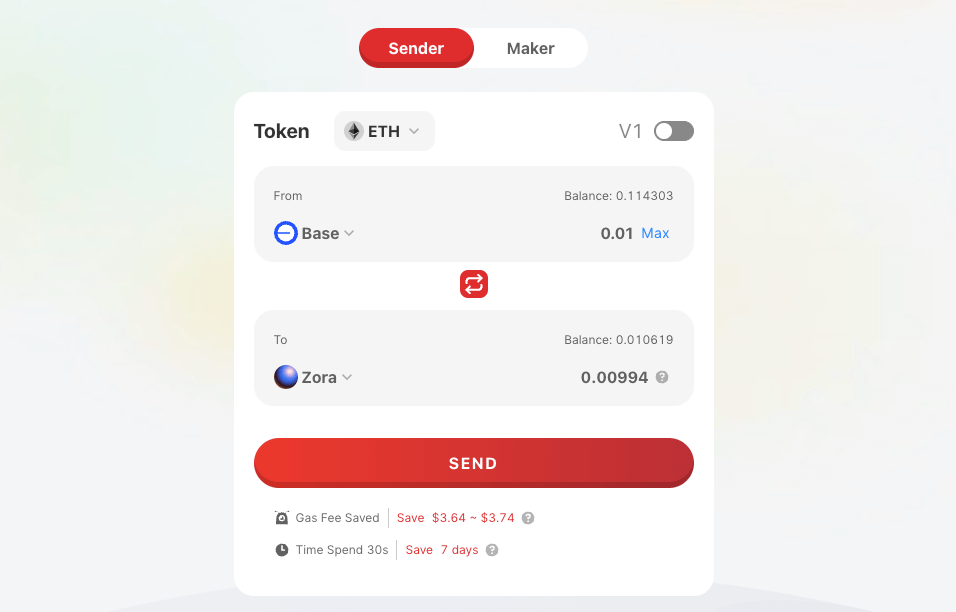
After submitting your bridge transaction, you’ll see a transferring graphic that keeps you updated on the status of your ETH throughout the entire multichain journey.
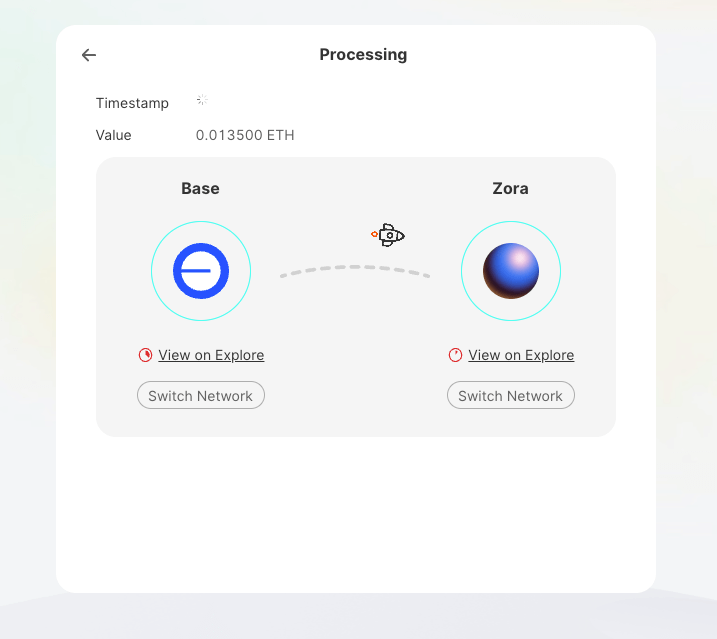
Once the transfer is complete and you’ve confirmed that the ETH appears in your wallet, it’s time to move on to using Zora!
Once you have your ETH on Zora Network, it’s time to go shopping. With completely open access for anyone who wants to list art, there is no shortage of NFT options you can choose from on Zora. From the Zora homepage simply scroll to start exploring:
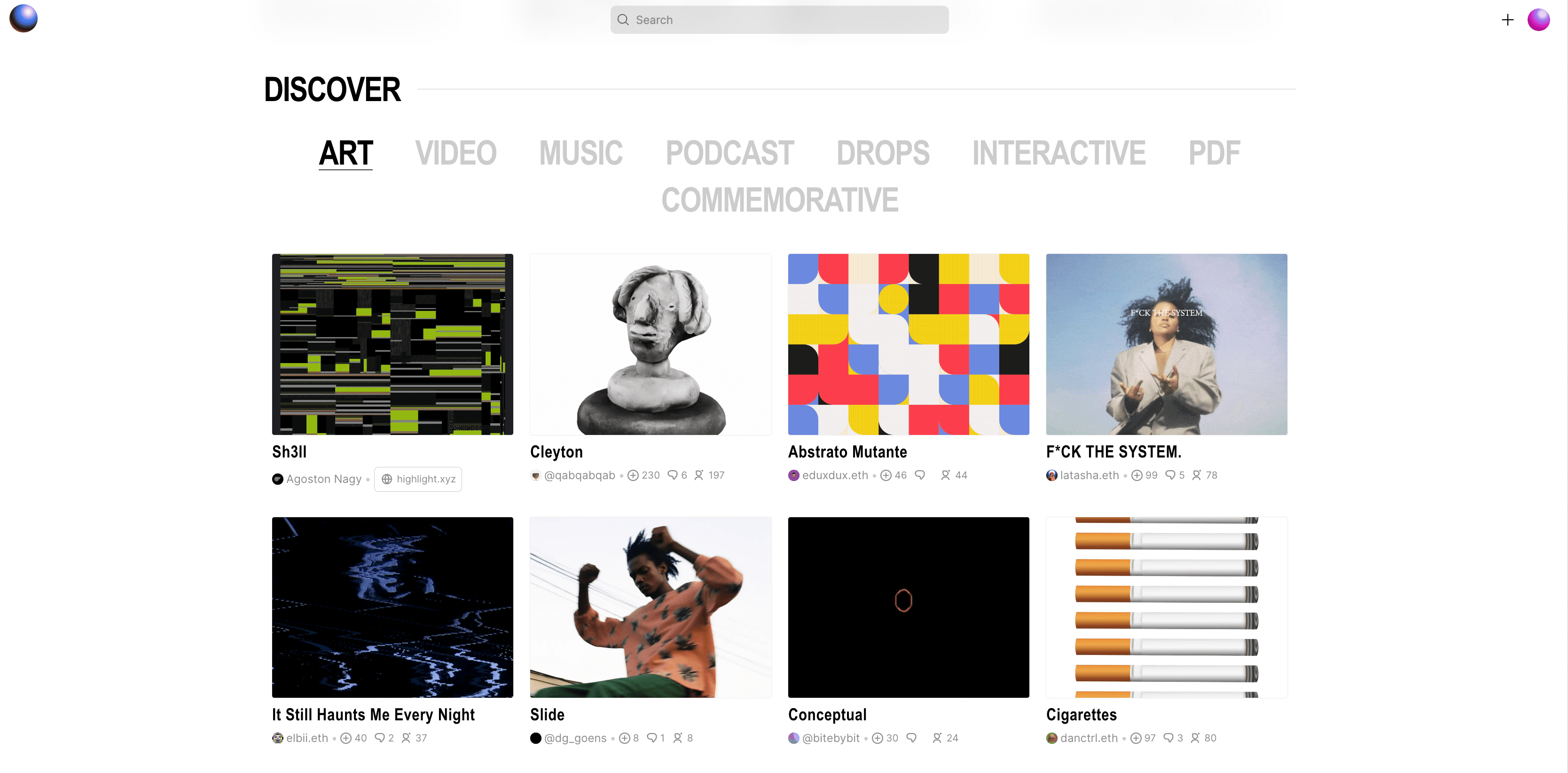
Many of the NFTs are extremely low-cost. For example, this recent NFT collaboration between LayerZero and Zora was a “free” mint with only the default .000777 Zora mint fee being charged:
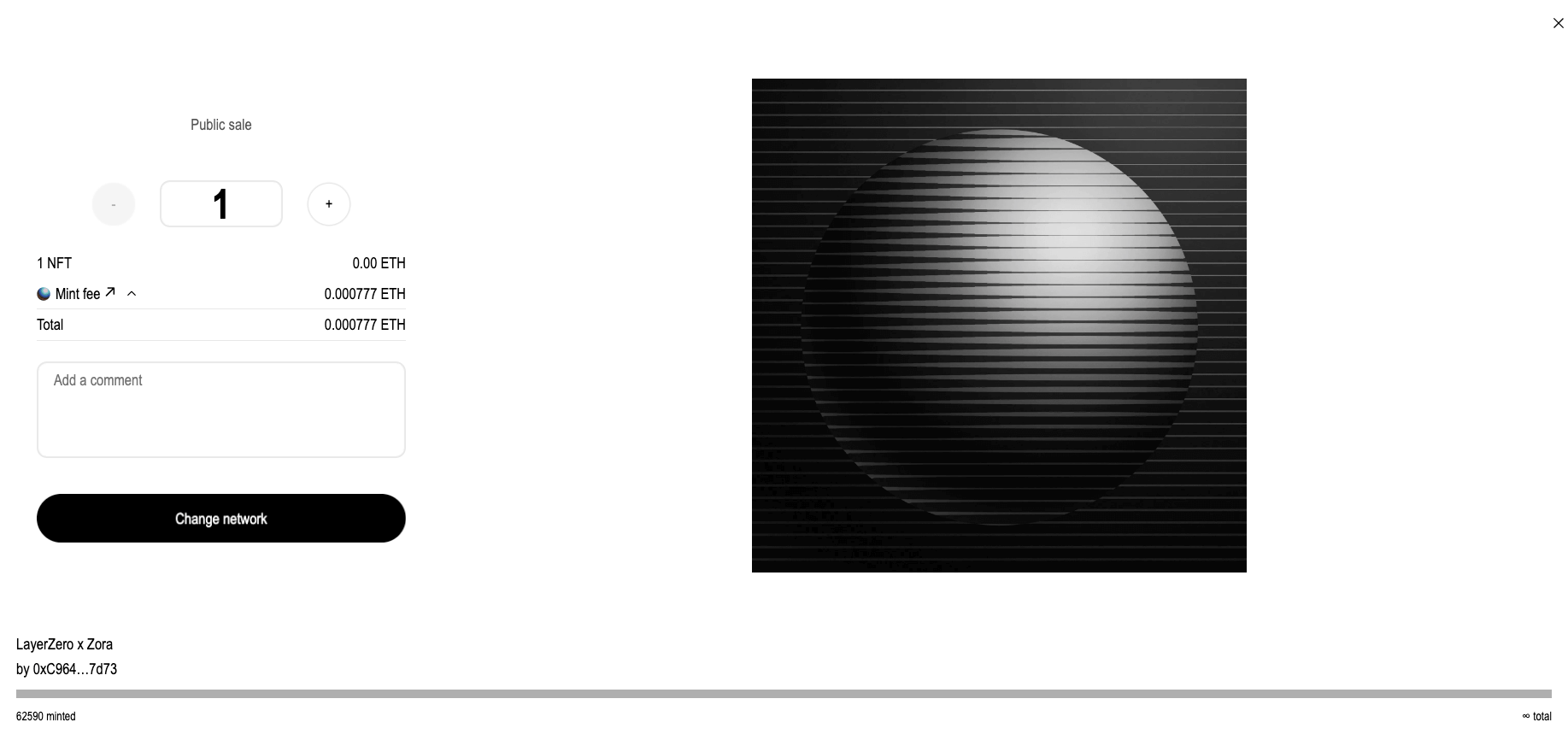
Remember, NFTs on Zora can be minted on several chains. While any activity on the platform has the potential to qualify you for a retrodrop, we recommend minting at least one NFT on the platform’s official Zora Network. You can check the network a Zora NFT is minted on by navigating to the “Provenance” menu for a specific NFT. There you will see a “Network” item (along with other technical information):
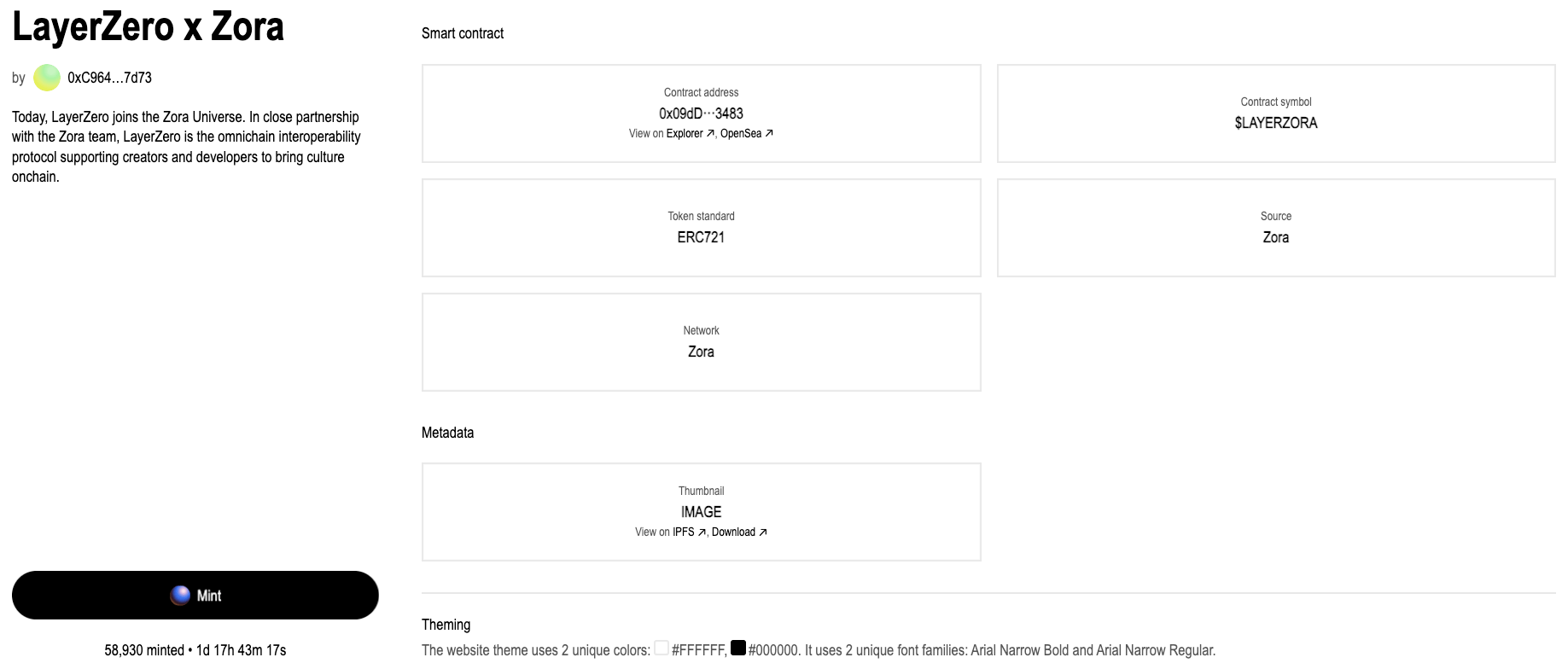
Another fast method to check the chain an NFT is minted on is to simply look at the URL for the page itself. This URL should list the chain being used:

Once you’ve found art you want to collect or mint, enter the amount you’ll be purchasing, confirm the transaction in your DeFi wallet, and you should quickly see a success message:
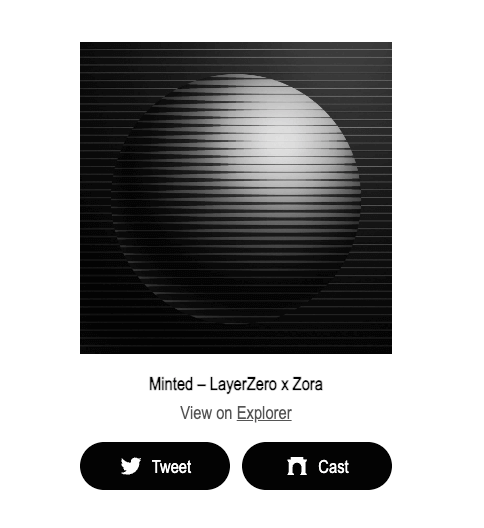
With that, you’re all set! Keep minting or collecting as many NFTs as you would like to boost your collection and potentially be rewarded down the line with a token retrodrop based on your platform activities.
While there’s no way to know exactly what will be required to qualify for a Zora retrodrop, it doesn’t hurt to cover all possible options. Even if you are not an artist, you may want to consider listing your own NFT on the platform.
Zora has a history of treating artists on the platform well, so it wouldn’t be strange to see them add an extra reward within the retrodrop for users that contribute art. Adding an NFT to Zora is as simple as navigating to their “Create” pages via the header navigation menu:

Zora makes it extremely easy to mint your own collection
The create pages are simple but customizable so be sure to check out all the different options and put your best foot forward when publishing art. Who knows, you may even make some ETH from users who like your art so much that they mint it for their own collection!
The cost of minting or collecting an NFT on Zora Network is relatively low compared to doing so on the Ethereum mainnet. This makes potential Zora retrodrop tasks especially high-ROI activities. With tons of new artists actively releasing drops on Zora, you can put yourself in a prime position while also collecting some awesome new art with very little paid in the way of fees.
When compared to other crypto airdrop opportunities, Zora stands out due to this combination of affordability and accessibility to quality art.
As we hope you’ve seen, De.Fi is always on the lookout for new airdrop opportunities to help web3 users get ahead. We firmly believe that doing your research and getting your hands dirty using protocols yourself is the best way to tilt the scales in your favor for the next crypto bull market.
However, it’s also important to stay vigilant whenever you are operating within the DeFi yield farming and NFT ecosystems. As inventors of crypto’s first antivirus, we’re not just here to educate you. It’s our mission to keep investors safe as well.
With this in mind, we highly recommend taking some time to investigate the security tools built into our industry-leading DeFi dashboard suite: Scanner & Shield.
Scanner is a free smart contract security auditor that allows you to get a report on any possible exploits hidden within a token address in <1 minute.

And what about auditing existing wallet connections and purchases? In that scenario, Shield has you covered. Simply connect your wallet to our revoke permissions tool and we’ll complete another automated scan to ensure that
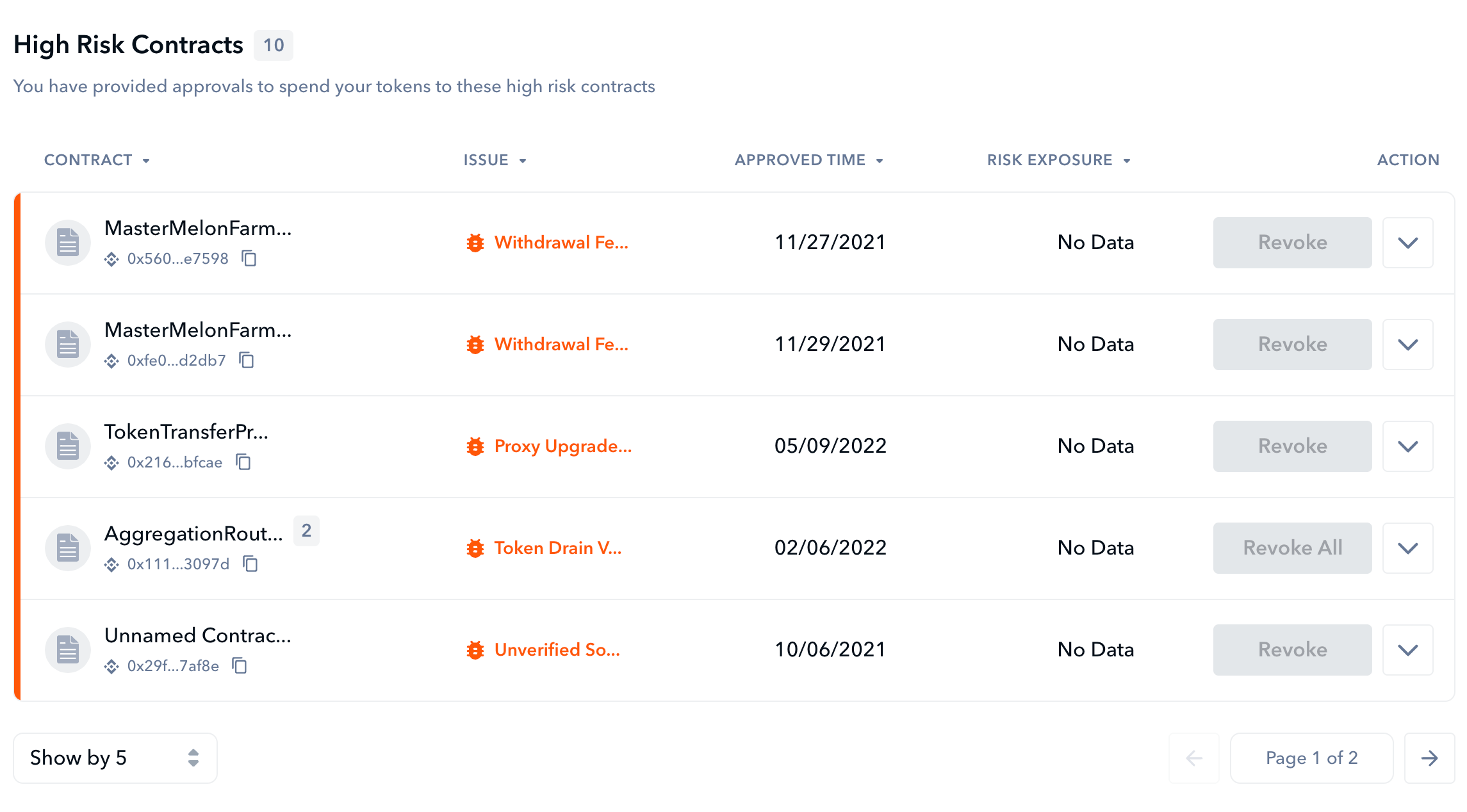
Finally, to stay up-to-date on breaking crypto security news, we highly recommend following our De.Fi Security account on X. Turn on post alerts and be notified when an exploit comes to our attention!
Crypto can be intimidating, but with De.Fi by your side you’ll have everything you need to stay secure while finding the best opportunities. Happy hunting!
October was a month of strong growth and ...
September was a month of global...
August was a month of major...
From major Explore Yields upgrades to...
June was a month of big releases and improvements across...
The end of May brought important updates across...
© De.Fi. All rights reserved.